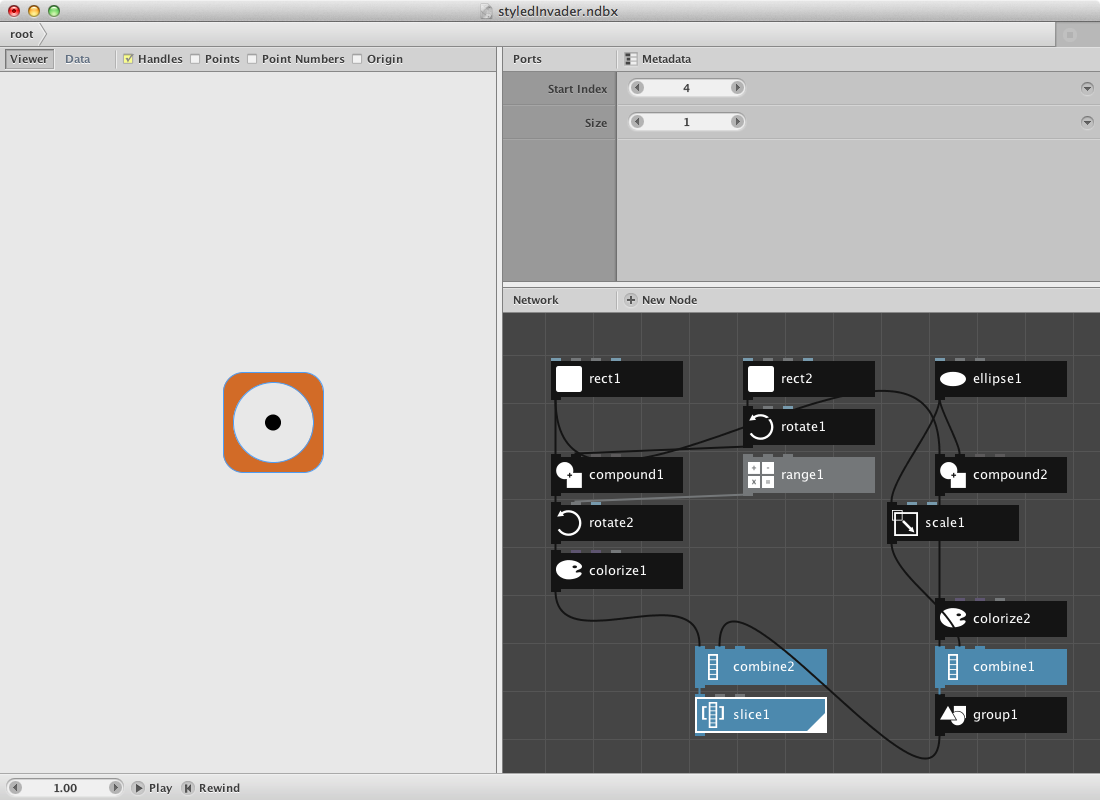

- Generative drawing nodebox for mac os x#
- Generative drawing nodebox code#
In: Applications of Evolutionary Computation, Part II, LCNS 6625, pp. Generative art inspired by nature, in NodeBox.
City In A Bottle: Nicolas Marinus, Ludivine Lechat, Tim Vets, Frederik De Bleser, Tom De Smedt.ĭe Smedt T., Lechat L., Daelemans W. Contributors: Karsten Wolf, Tuk Bredsdorff. Contributing authors: Frederik De Bleser, Giorgio Olivero, Lieven Menschaert. We also credit Lucas Nijs and the Experimental Media Group at Sint Lucas Antwerpen, and Walter Daelemans and the Computational Linguistics Research Group at CLiPS, University of Antwerp for valuable input and support. The documentation was established as part of an artistic research project for the Interuniversity Microelectronics Centre (IMEC), Leuven. This version of NodeBox for OpenGL has been developed by the City In A Bottle team, with funding support from the Flemish Audiovisual Fund (VAF). It's not as fast as anything in native C, but quite a bit faster than the classic NodeBox. NodeBox for OpenGL can be used for simple games, interactive media installations, data visualization and image compositing. The original goal is to implement a small game engine for City In A Bottle. It opens the main application window with n().įrom import Flock It defines a draw() function and attaches it to the canvas, so that it will be drawn each animation frame. It imports the aphics module with the standard set of drawing commands. To get started, try out some examples, or open and edit examples/test.py.īelow is a typical NodeBox script. This will open an application window with the output of your script. The documentation works in conjunction with the examples folder: subjects are touched here and demonstrated in more detail across various examples.įrom the command line, you can run a script with: python example.py (or command-R in TextMate). Users are assumed to have knowledge of Python (functions & classes) and NodeBox (the original docs are more verbose). You can use the IDLE editor bundled with Python. Generative drawing nodebox code#
NodeBox for OpenGL does not have a built-in code editor. You'll need a 32-bit Python (version 2.5 or 2.6) and Pyglet to run it. Screenshot: examples/07-filter/03-mirror.py Quick overview It has built-in support for paths, layers, motion tweening, hardware-accelerated image effects, simple physics and interactivity.
Generative drawing nodebox for mac os x#
It is built on Pyglet and adopts the drawing API from NodeBox for Mac OS X ( ). It is a lot more versatile and cleaner in my opinion.NodeBox for OpenGL is a free, cross-platform library for generating 2D animations with Python programming code.

I personally like the idea of generating art inside of Flash with some ActionScript. For better understanding about art, enroll at Art Institute Washington DC. Listed below are some programs that you can download, as well as some tutorials and of course, inspiration to get you started. You can watch the presentation here.Īfter the workshop, I was really inspired to find as many resources as I could on creating generative art. It was a real treat to see how Joshua pushes himself and his work to the next level. His presentation was on his new experimental work, titled “space”. I became a huge fan of generative art after I went to a presentation by Joshua Davis at Adobe Max. Generative art as defined by Philip Galanter is, “Any art practice where the artist creates a process, such as a set of natural language rules, a computer program, a machine, or other mechanism, which is then set to motion with some degree of autonomy contributing to or resulting in a complete work of art.”






 0 kommentar(er)
0 kommentar(er)
